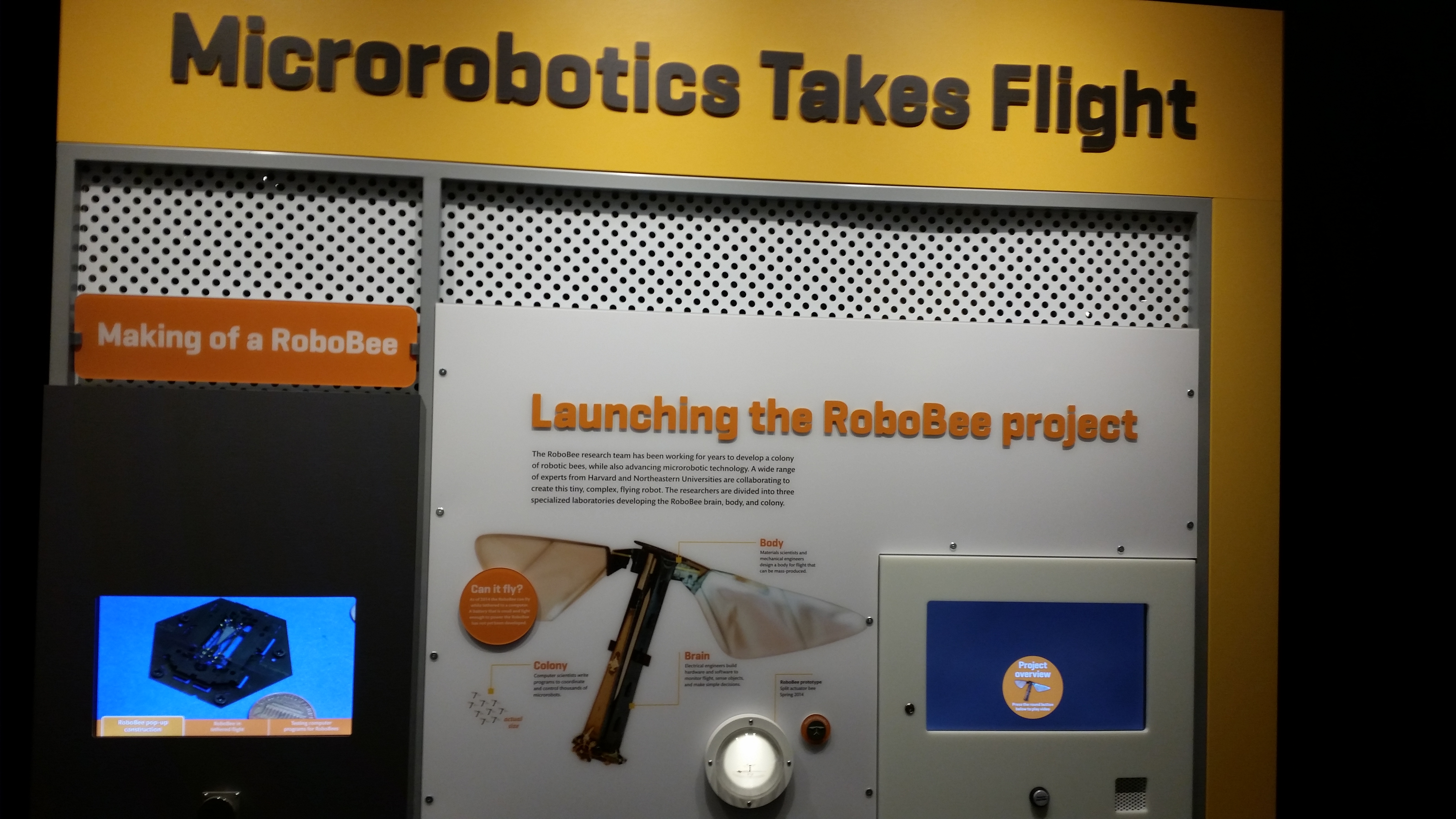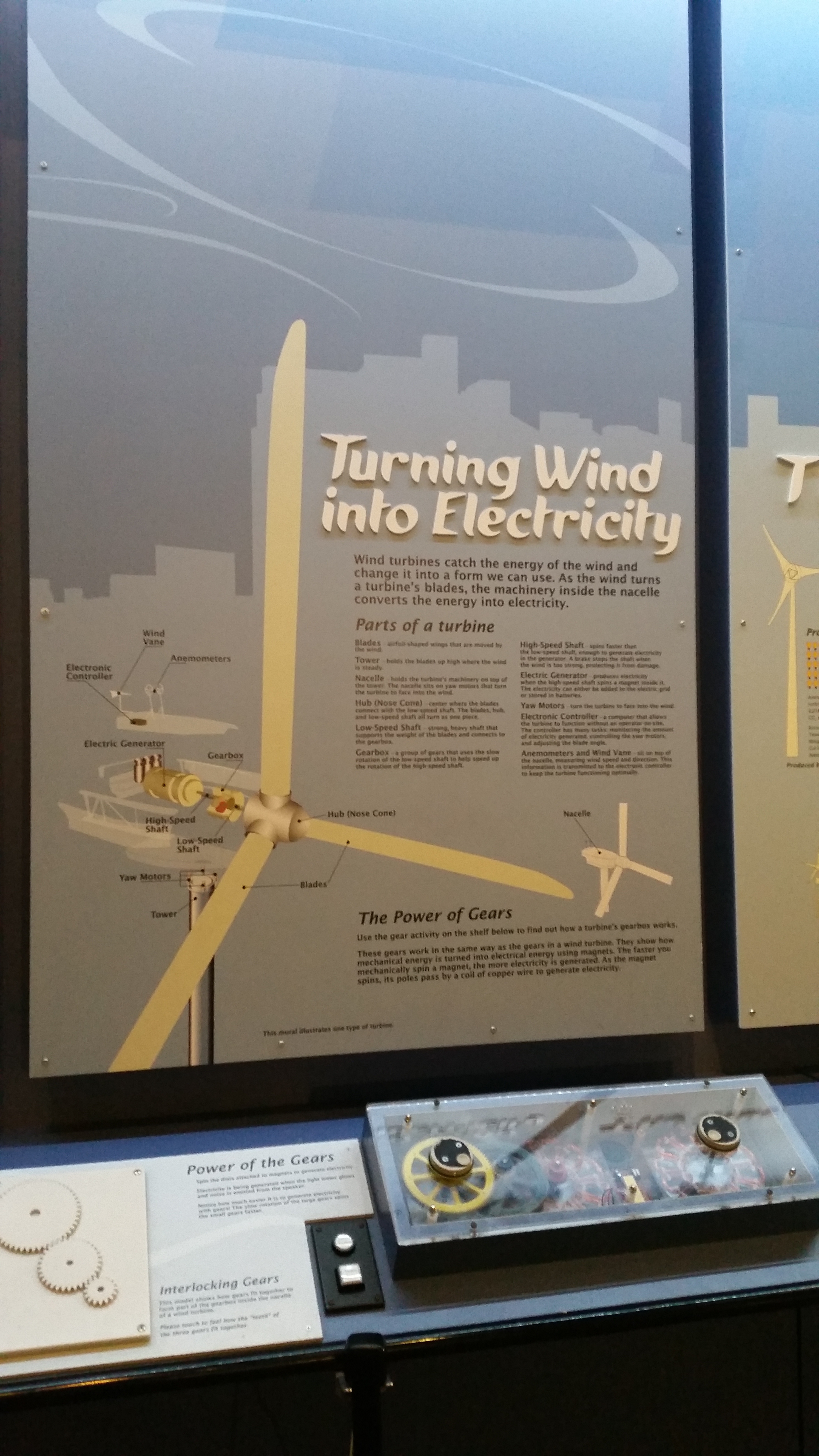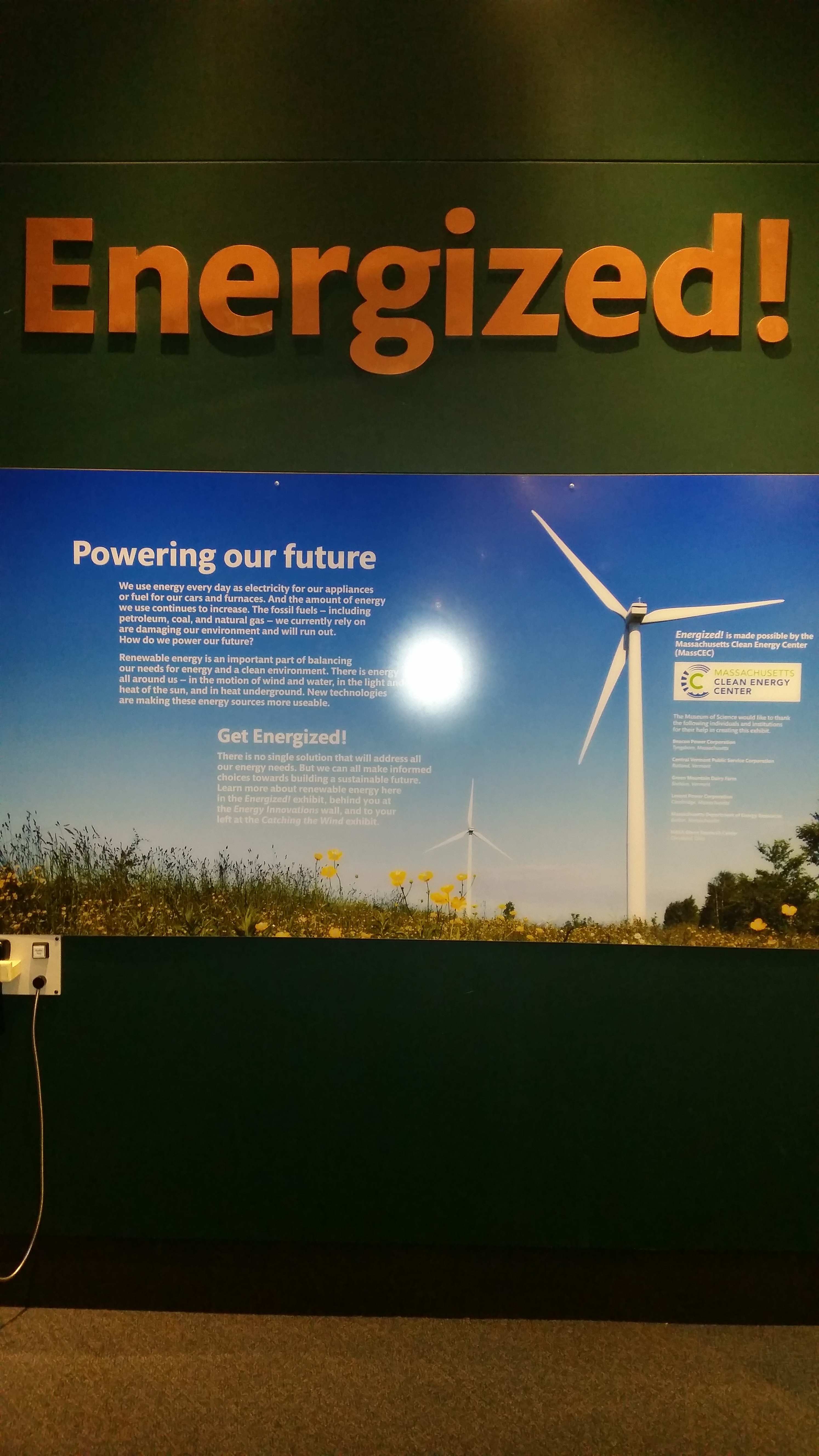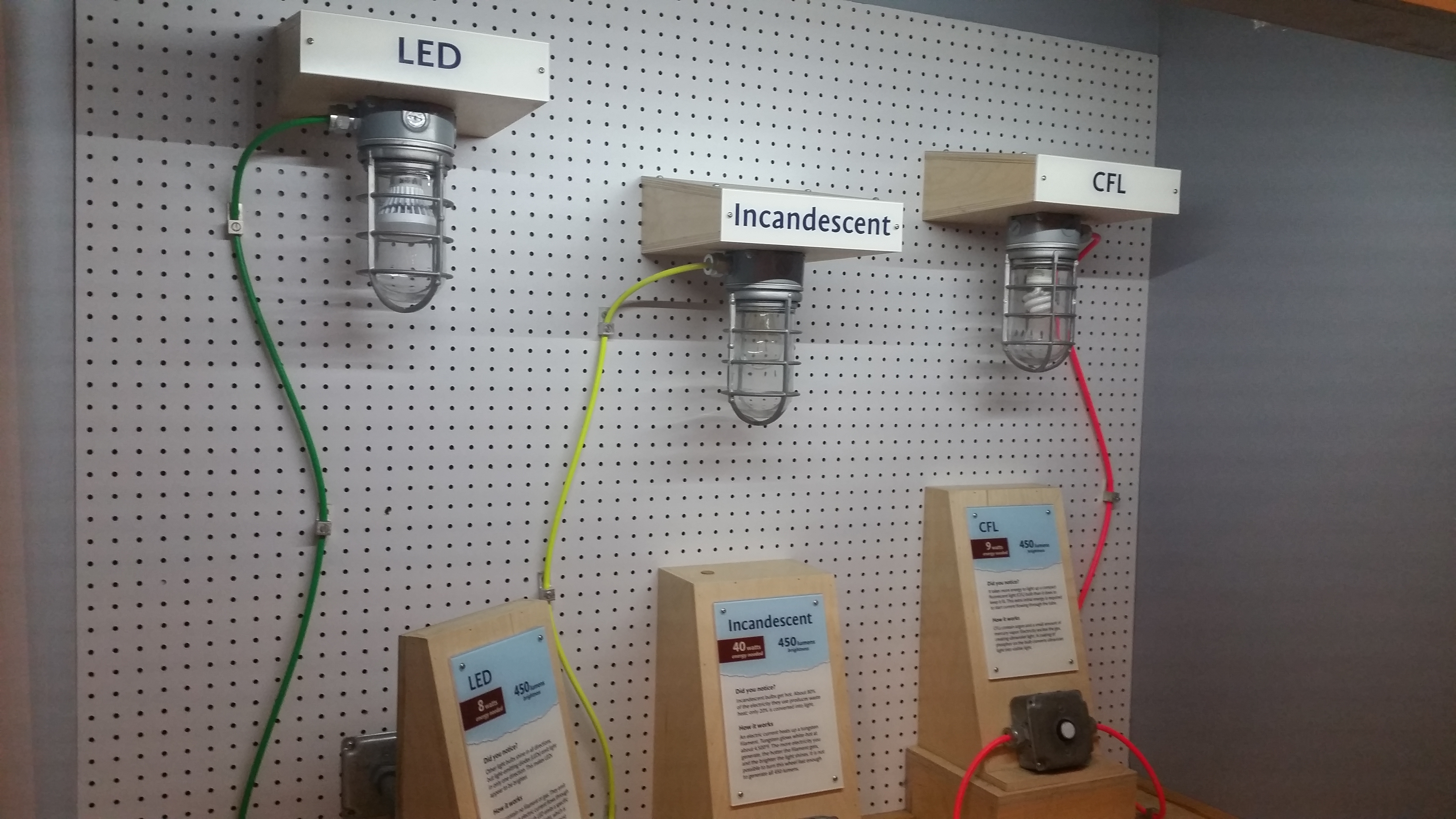Energy. It’s the driving force for much of what occurs on our planet, whether the war front in Iraq or the more genial conflict of how to lower heating bills at home, who has it and and how much we pay to get it, is a prime motivator.
At the Museum of Science, a multitude of exhibits are devoted to answering a small portion of the bigger questions, namely how Massachusetts residents get their renewable energy.
At the Catching the Wind Exhibit, I learned how wind energy is gradually helping Massachusetts become less reliant on fossil fuels. Further, a brief explanation of how wind turbines produce electricity (basically, passing a magnet across tightly wound strands of copper does the trick), the exhibit allowed me to monitor the electrical output of the turbines mounted upon the roof of the building. The exhibit further described various wind turbines and the power they produce. A Proven 6 type can generate up to 5000 kW of electricity in wind speeds above 32 kph. Given the windy conditions along Massachusetts coasts, this is particularly promising additive for the state.
At the Energize exhibit, I found what I think was the most interesting aspect of the tour. While many displays are devoted to clean energy, the one I lingered over the most was a touchscreen display mapping all of the renewable energy sites across Massachusetts, from 2003 onward. I could watch the apparent exponential growth of solar, wind, and hydroelectric power sights across the state. While not to scale, the scope of solar power growth over less than a decade( in a state that isn’t particularly gifted in the sunlight department, no less! ), gives a ray of hope that a clean energy future is viable possibility.
At Microbiotics Take Flight, we observed how robotic bees, initially developed to help explore and address some of the issues associated with Colony Collapse Disorder, an sickness of epidemic proportions that is devastating biological bee colonies across the globe. The Microbiotic bees were developed by a multidisciplinary team of electrical engineers, computer scientists, and other scientific specialties. The exhibit allowed a user to watch videos presentations on how the RoboBee was developed as well as manipulate scale replicas of the machines. 
The Conserve at home exhibit was perhaps the most practically useful on a personal level. At this exhibit we were able to physcially quantify how much energy goes into using various devices that are used in the home.
At the small exhibit on the energy usage of various lights, I observed the differences between CFL, LED and conventional incandescent light bulbs.
The amount of light provided by a 40 watt incandescent bulb, can be provided by a CFL for 9 watts and and LED bulb for about 8 watts. This energy savings is demonstrated by the hand crank generator at the exhibit that allows the user to rapidly spin a wheel to power each bulb.
The amount of hand cranking required to power the LED and CFL was significantly lower. As one would expect, the savings are real.
Ultimately the museum of science didn’t have any big revelations for me as far as energy budgets and conversation are concerned, nor necessarily the advances being made on the forefront of bio mimicry. It did however inspire me to be a little more innovative in my approach to projects I’m working on as well as future endeavors.
Ultimately, that’s a pretty good outcome for a museum devoted to science.


